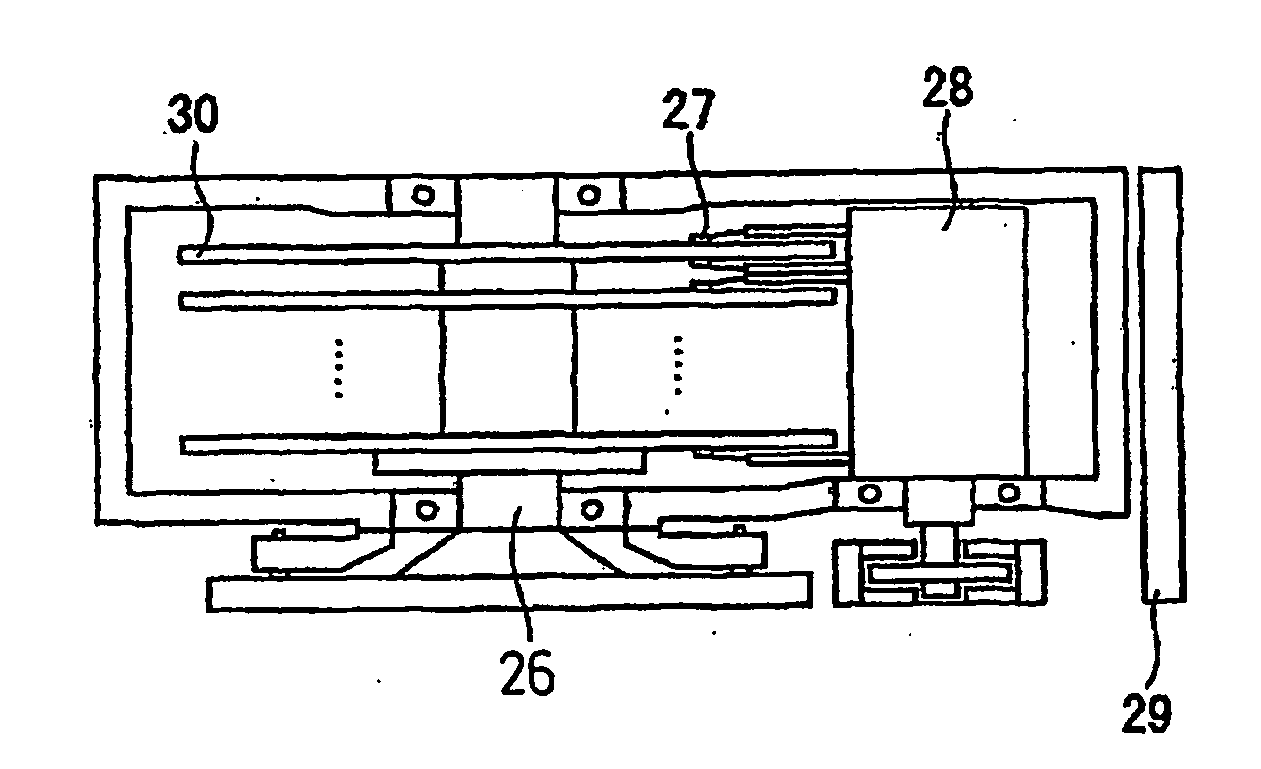Magnetic recording medium, method for production thereof and magnetic recording and reproducing device
a magnetic recording and reproducing device technology, applied in the manufacture of head surfaces, instruments, record information storage, etc., can solve the problems of reducing the bit error rate, affecting hindering the enhancement of the recording density, so as to ensure the stability of the head floatation, avoid the effect of falling, and excellent ability to separate a magnetic recording pattern
- Summary
- Abstract
- Description
- Claims
- Application Information
AI Technical Summary
Benefits of technology
Problems solved by technology
Method used
Image
Examples
examples 1 to 26
[0081]Similarly to Comparative Example 2, a vacuum chamber in which an HD-oriented glass substrate was set was evacuated in advance to a vacuum of 1.0×10−5 Pa or less. The glass substrate used herein had as the material thereof a glass ceramic that was composed of Li2Si2O5, Al2O3—K2O, MgO—P2O5 and Sb2O3—ZnO. It measured 65 mm in outside diameter and 20 mm in inside diameter and had an average surface roughness (Ra) of 2 Å.
[0082]On the glass substrate, a soft magnetic layer of FeCoB, an intermediate layer of Ru and a magnetic layer of an 70Co-5Cr-15Pt-10SiO2 alloy were stacked by the DC spluttering method and a protecting film layer of C (carbon) and a fluorine-based lubricating film were further stacked by the P-CVD method, sequentially in the order mentioned. The FeCoB soft magnetic layer had a film thickness of 600 Å, the Ru intermediate layer 100 Å, the magnetic layer 150 Å and the C (carbon) protecting film layer an average of 4 nm respectively. Thereafter, a magnetic pattern wa...
PUM
| Property | Measurement | Unit |
|---|---|---|
| surface roughness Ra | aaaaa | aaaaa |
| surface roughness RA | aaaaa | aaaaa |
| width | aaaaa | aaaaa |
Abstract
Description
Claims
Application Information
 Login to View More
Login to View More - R&D
- Intellectual Property
- Life Sciences
- Materials
- Tech Scout
- Unparalleled Data Quality
- Higher Quality Content
- 60% Fewer Hallucinations
Browse by: Latest US Patents, China's latest patents, Technical Efficacy Thesaurus, Application Domain, Technology Topic, Popular Technical Reports.
© 2025 PatSnap. All rights reserved.Legal|Privacy policy|Modern Slavery Act Transparency Statement|Sitemap|About US| Contact US: help@patsnap.com


